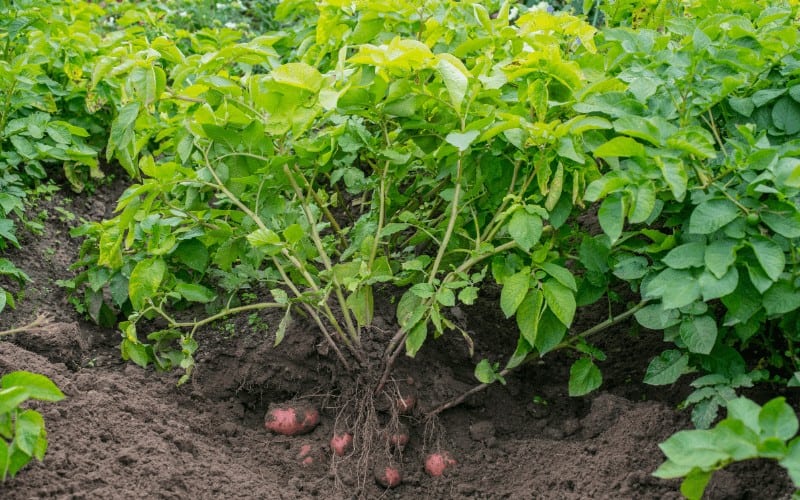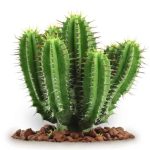There's a rising concern regarding the many fruits and vegetables we consume on daily basis. It's unclear to some people if these fruits and veggies are actually "natural" as we know them to be.
Being that apples are man-made, carrots are man-made, and even broccoli is man-made, the question, "are potatoes man-made?" doesn't seem surprising.
Yes, potatoes are man-made, the modern-day potato was domesticated centuries ago; else, we wouldn't have gotten the sweet, root vegetable, "potato," that we cook and eat pretty often.
Regardless, there are a lot of fun facts about potatoes that you should know. This root vegetable has several species, and of course, it is cultivated and eaten across the nations of the world.
Table of Contents
How Do Potatoes Get Its Current Form?
The food plant, modern-day Potato, is believed to originate from the Americas. Potato (with the scientific name Solanum tuberosum) is a perennial - a starchy tuber of the plant Solanum Tuberosum. It belongs to the nightshade family, Solanaceae.
Apparently, this plant has wild species, which are believed to come from modern-day Peru and northwest Bolivia, as obtained from testing the cultivars genetically.
Potatoes have been existing for a long time ago; studies show that the plant was initially domesticated from a species in the Solanum Brevicaule complex, found in the Andes region, South America. The domestication is believed to have happened approx. 7,000–10,000 years ago.
As of 2014, potatoes ranked as the 4th most cultivated food crop, falling behind maize, wheat, and rice. Potatoes got to Europe in the 16th century, but have become a staple food globally.
There are over 5,000 potato varieties, created through selective breeding - a farming technique practiced many centuries ago.
Furthermore, studies show that over 99 percent of modern-day cultivated potatoes are descendants of the early varieties that appeared in the lowlands of south-central Chile. Potatoes are siblings to tomatoes; they both belong to the genus Solanum.
Are Potatoes Man-Made?

A lot of people get confused with the word "Man-Made?" Yes, potatoes are man-made, but this doesn't mean that they were created in some lab and then brought out to be cultivated by farmers and gardeners.
The cultivated potatoes of nowadays were gotten through hybridization, while further varieties were gotten through selective breeding.
Plant hybridization refers to the process of crossbreeding genetically dissimilar parents to create a new hybrid. In the same vein, selective breeding refers to a plant cultivation technique where farmers selectively breed similar plants to develop or create a new plant with specific traits.
Both hybridization and selective breeding are practiced to create plants that prove more resistance to pests and to obtain a new variety or species that tastes better, looks bigger, and promises more yield.
Since hybridization and selective (artificial) breeding are done by humans, any plant obtained through any of these methods is tagged a "man-made plant;" however, in the real sense, they are still natural plants.
So many fruits and vegetables we consume today were all gotten from other of these planting techniques, but they are all still safe to eat.
Potatoes Types
The most cultivated potato species is Solanum tuberosum, which has about 48 chromosomes.
Modern varieties of Solanum tuberosum are the most cultivated ones across continents. You will find potatoes of different colors; the colors are determined by the cultivars.
- Russet Potatoes
- Red Potatoes (ex. Red Pontiac)
- White Potatoes (ex. Kennebec)
- Yellow Potatoes
- Purple Potatoes
- Fingerling Potatoes
- Petite Potatoes
There are over 5,000 recognized potatoes species, each having many varieties - up to 100 or more. Reagardless, all types, species, and varieties of potatoes are save to eat.
Read Also: Is Cauliflower Man-Made?
Conclusion
So, are potatoes man-made? Yes, they are man-made hybrids created many years ago by the early farmers living in America.
Through selective breeding, over a thousand species and varieties of potatoes have been created, and they are cultivated in many regions across continents.
Notwithstanding, there are GMO varieties of the plant, Solanum tuberosum, but they have not been generally accepted by the European Union.
It is also important to note the selective breeding takes hundreds of years before the actual result is obtained. Plants gotten through this method are entirely safe for human consumption, and can still be referred to as natural plants.




